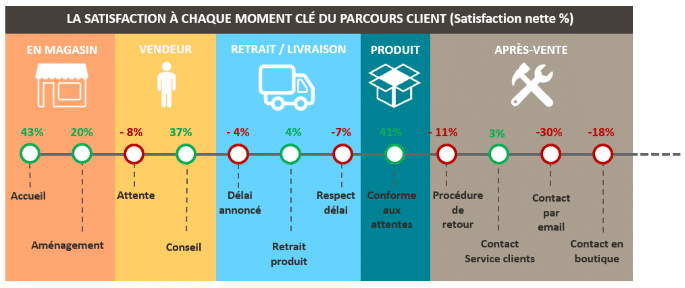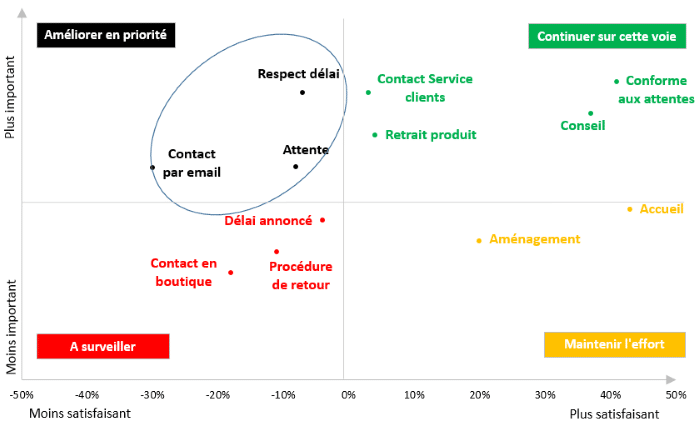Thursday, December 10, 2015
Measuring customer satisfaction, what next?
Responsible for the continuous improvement of internal customer satisfaction, you will monitor the level of satisfaction of your customers and deal with any dissatisfaction or callback requests.
One question remains: how to extract major trends from the results and define the actions to be taken for the following year?
In the panel of existing analyses to answer this question, we develop in this post the most common analysis: the annual balance sheet in two parts:
- Compilation of satisfaction results to identify strengths and areas for improvement throughout the customer journey
- Importance-Satisfaction Matrix to prioritize actions according to the importance of each key moment in the customer experience.
Customer satisfaction reflects the customer journey
When writing the satisfaction questionnaire, it is advisable to target the key stages of the customer experience and follow their chronology. This way, when compiling the results, you can identify the satisfaction levels at each of these key moments.

The diagram above illustrates the perceived quality of the customer's experience throughout the journey. Thus, the company AB can clearly rely on the performance of its salespeople/advisors in store. The issues of delivery and after-sales service are clearly identified as unsatisfactory.
Customer satisfaction as a strategic decision-making tool
The key moments, assessed and ranked in the previous section by their level of satisfaction, can also be grouped by "importance". Importance is defined as the ability of the item to influence the overall level of satisfaction.
The cross-referencing of the level of satisfaction of each key moment with its importance within the overall perception of the experience provides a synthetic analysis of the actions to be carried out in priority. The graphical representation of these elements illustrates the classification of key moments by action priority.

The mapping classifies the elements into four categories:
- Continue on this path: the customer attaches importance to these criteria and you seem to meet his expectations. You can therefore rely on the quality of these services.
- Maintain the effort: the elements are of low importance in the overall evaluation of the customer journey. The customer is satisfied with them all the same. It is therefore relevant to pursue actions that will allow you to bring positivity to your internal communications.
- To watch out for: despite low satisfaction, service improvement does not appear to be a priority since these elements are perceived as being of low importance in the customer evaluation. However, beware of an unanticipated change in the market that could modify rules and customer expectations, and consequently the importance for the customer.
- Priority for improvement: Customers are attached to these aspects of the experience and are not satisfied with the service. The importance of these elements strongly impacts their perception of the overall experience. The actions to be taken will be based on these criteria within the top-left square.